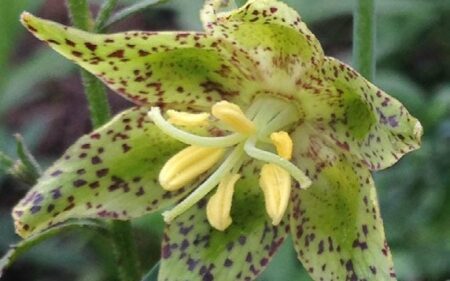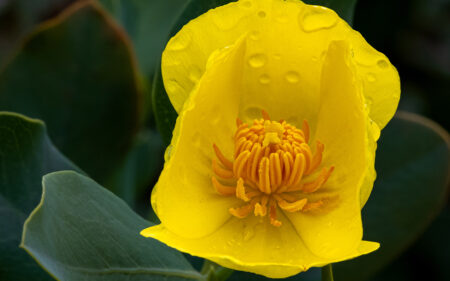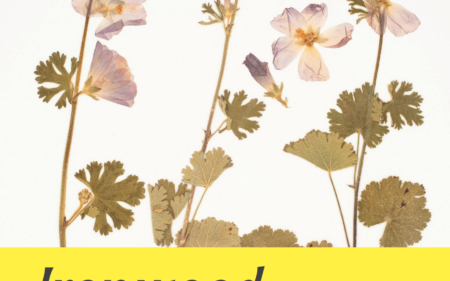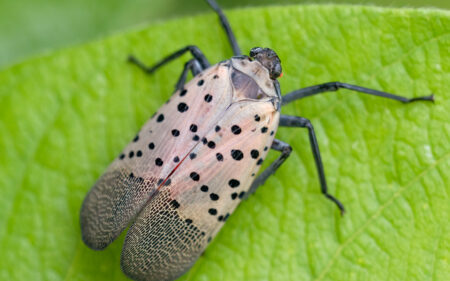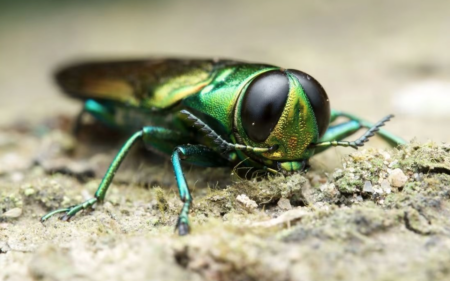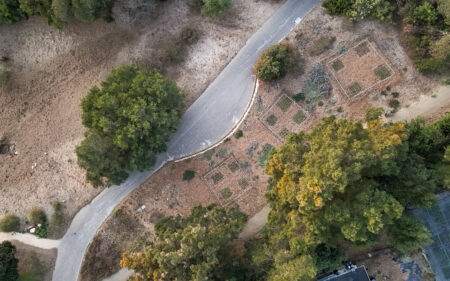¿Qué es un liquen?
Si busca en Google la palabra "liquen", algunos de los resultados hablarán invariablemente de la enfermedad cutánea "liquen plano". Este artículo no trata de eso. Se trata más bien de un grupo muy interesante de organismos que desempeñan un papel importante en nuestros ecosistemas.
Un liquen puede parecer un solo organismo, pero en realidad es una entidad compleja formada por varios organismos que viven en simbiosis. Está el hongo principal, que constituye la estructura del liquen y es también la parte que se ve cuando se observa un liquen que crece en una roca, un árbol o el suelo. También están las algas verdes o las cianobacterias, o a veces ambas, en el mismo liquen. Éstas producen alimento para sí mismas y para el hongo mediante la fotosíntesis. Además, los investigadores están encontrando cada vez más organismos que parecen formar parte de la relación, aunque hasta ahora se desconocen en gran medida sus funciones. Estos organismos adicionales incluyen diferentes tipos de levaduras y bacterias. Se podría decir que cada liquen es un pequeño ecosistema en sí mismo.
Tres formas principales de crecimiento
Por razones prácticas, los líquenes suelen dividirse en grupos en función de su forma de crecimiento. Es importante saber que formas de crecimiento similares no significan necesariamente que los líquenes estén relacionados. Existen tres formas de crecimiento principales:
1. Los líquenes foliosos se asemejan a una hoja con una superficie superior y otra inferior.
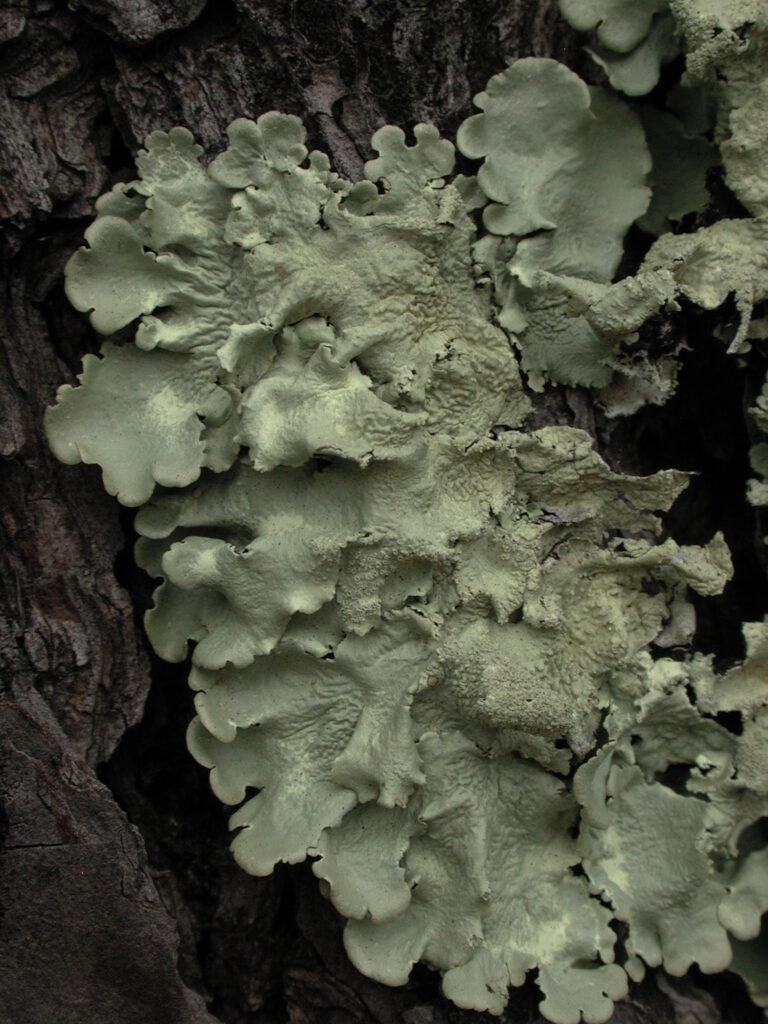
2: Los líquenes fruticulosos son tridimensionales, sin diferencia entre la superficie superior y la inferior. Los líquenes fruticulosos suelen tener el aspecto de un pequeño arbusto erecto o colgante.
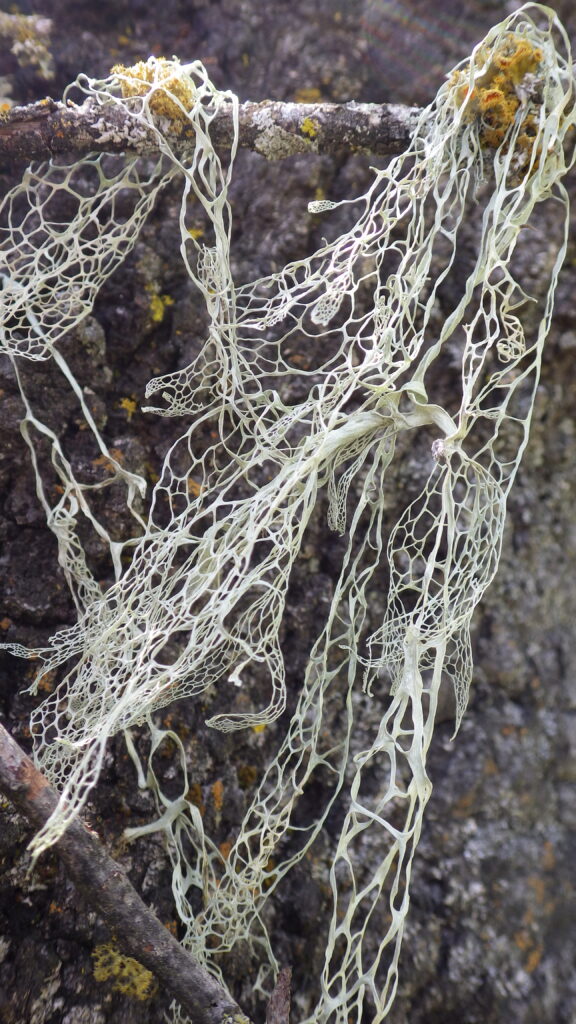
3. Los líquenes costrosos están tan firmemente adheridos a la superficie en la que crecen que habría que llevarse esa superficie para recoger el liquen.
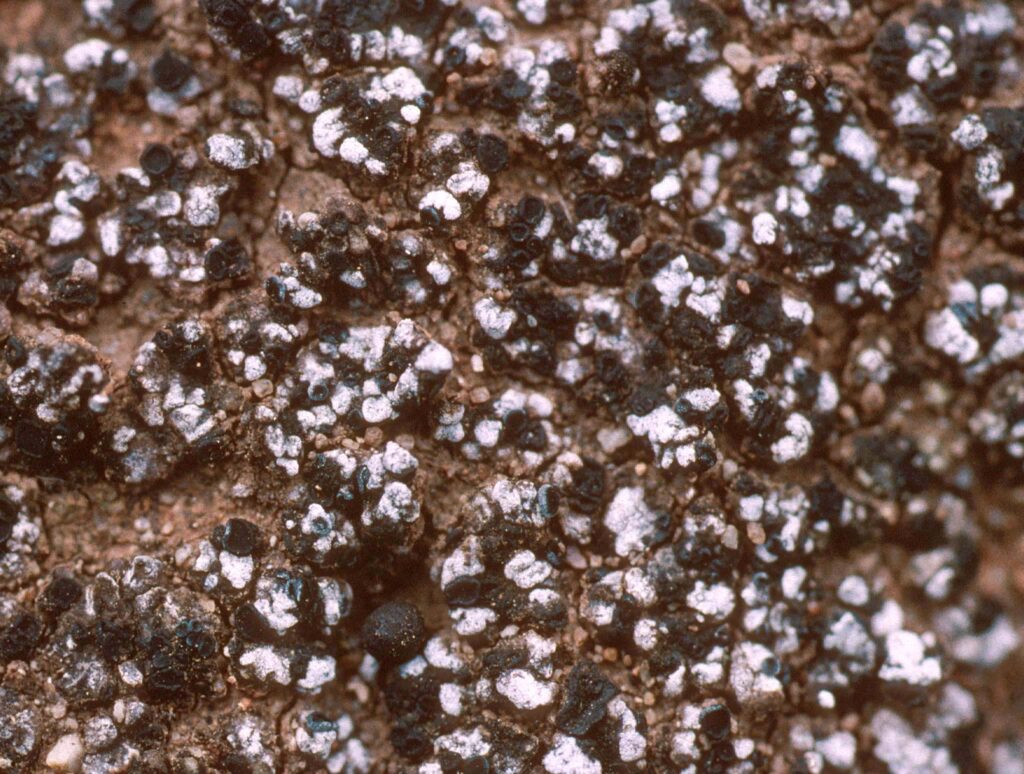
Reacciones químicas
Muchos líquenes producen compuestos químicos; se han identificado más de 700 compuestos diferentes exclusivos de los líquenes. Además de dar a los líquenes sus bellos colores, estos compuestos desempeñan funciones adaptativas. Algunos disuaden a los animales de comerse el liquen. Otros se utilizan como guerra química contra otros líquenes y musgos para asegurarse un espacio donde crecer. Otros reducen la intensidad de la luz solar para proteger a las algas de posibles daños. Los seres humanos incluso se benefician de algunos compuestos de líquenes conocidos por sus propiedades antibióticas, antivirales, antioxidantes o antifúngicas. Afortunadamente para los liquenólogos, estos compuestos químicos pueden ayudar en la identificación de los líquenes, ya que la adición de ciertos productos químicos, por ejemplo la lejía doméstica, produce una reacción de color cuando se aplica a algunos líquenes, pero no a otros.
Reproducción sexual
Los líquenes se reproducen sexualmente con dos tipos principales de cuerpos fructíferos: apotecios y peritecios.
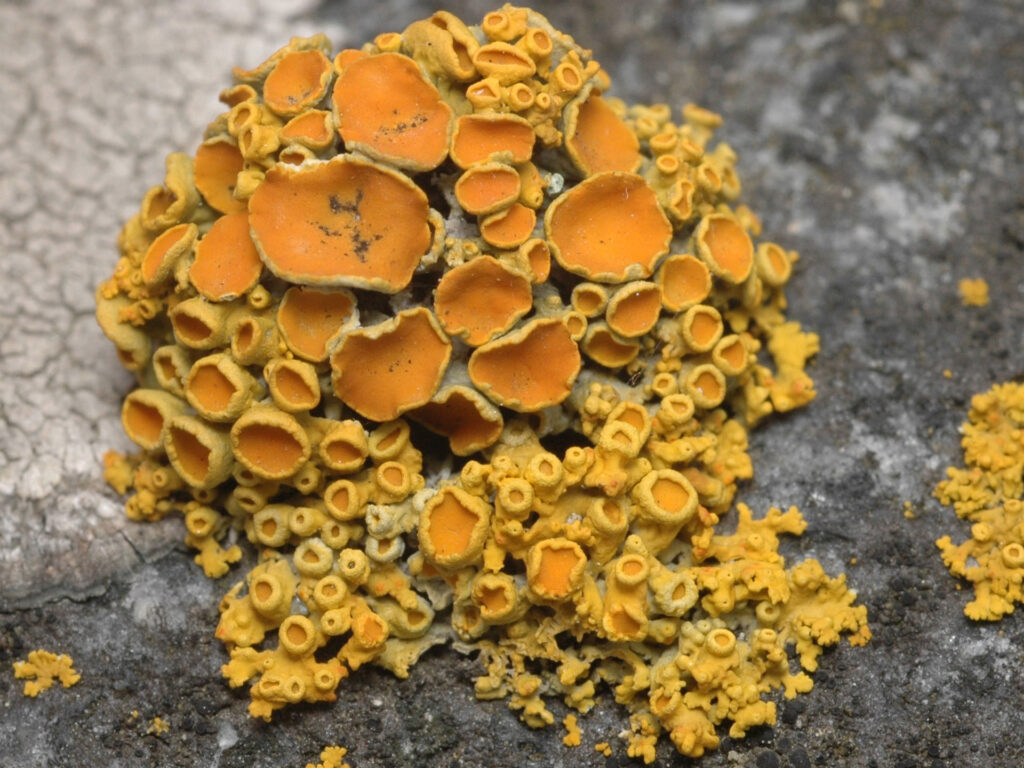
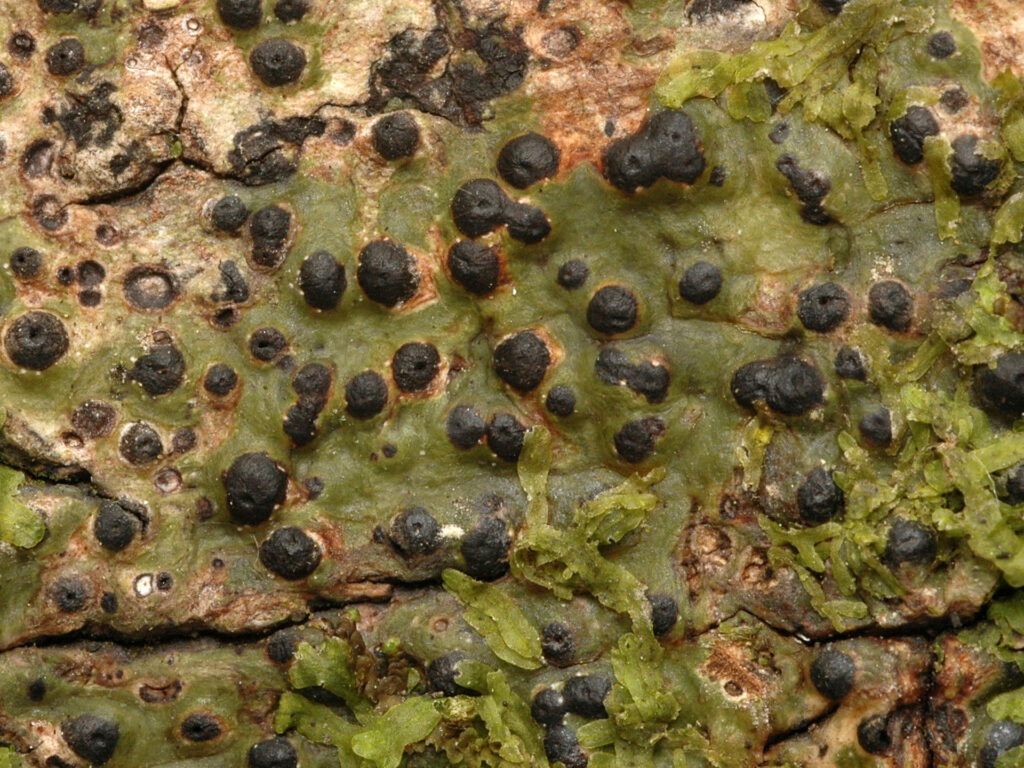
Aunque tienen un aspecto algo diferente -uno parece un cuenco diminuto y el otro una petaca-, su función es similar.
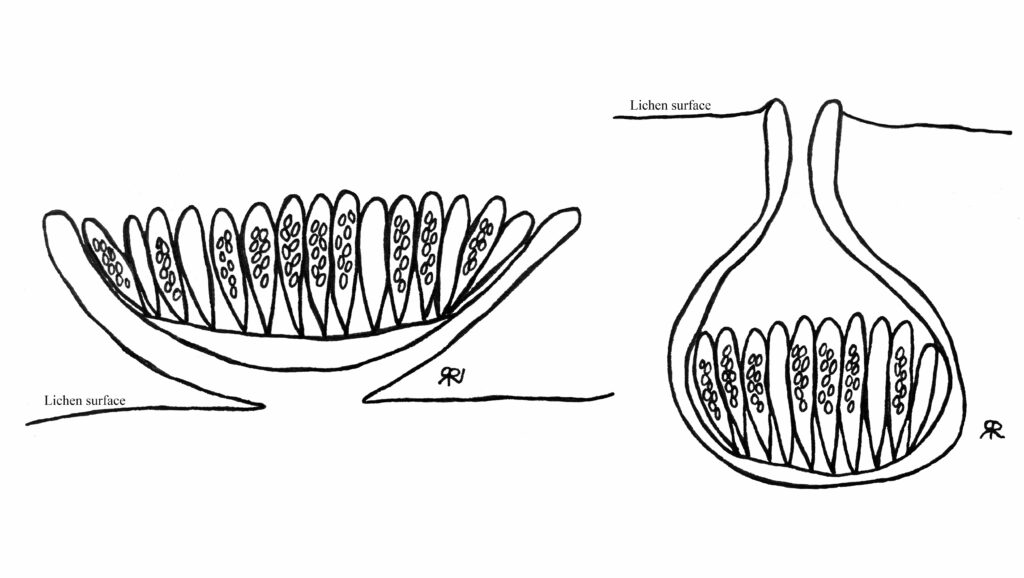
Es el lugar donde se producen las esporas del hongo. La reproducción sexual en los líquenes plantea un problema al que no se enfrentan la mayoría de los demás organismos. La reproducción sexual genera esporas de hongos que no contienen los demás componentes de la simbiosis; es decir, cada espora tiene que encontrar un nuevo socio fotosintético (y quizá también otros organismos) para crecer y convertirse en un nuevo liquen. Esto puede conseguirse asociándose con algas de vida libre o robando algas de un liquen ya establecido.
Sección transversal del apotecio
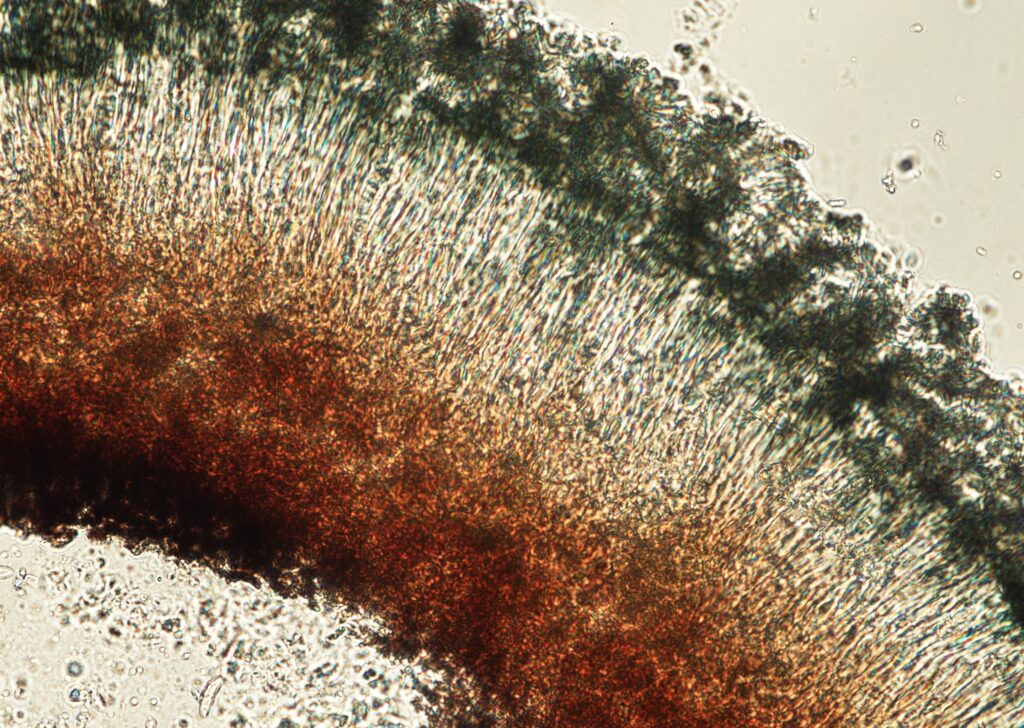
Sección transversal del apotecio de un liquen llamado Toniniopsisaromática (Toniniopsis aromatica), que es un liquen costroso grisáceo bastante discreto con apotecios negros. Crece en el suelo. Cada apotecio mide sólo unos 0,04 centímetros, y al cortar una sección fina a través de uno se revelan sus partes íntimas. El color marrón rojizo de la parte inferior es la base de los sacos donde se producen las esporas del hongo. Las esporas se producen dentro de los pequeños sacos que son visibles en la parte pálida del centro, y la parte verdosa es la parte superior del apotecio expuesta al aire. Si te fijas bien, en la parte inferior de la foto hay una espora con forma de salchicha, que sólo mide unos 0,0006 centímetros. Esto es cuatro o cinco veces más pequeño que el diámetro de un cabello humano y más del doble de lo que se puede ver a simple vista. Este es el tipo de detalles que los liquenólogos buscan habitualmente para distinguir entre las distintas especies de líquenes.
Reproducción asexual
Muchos líquenes han desarrollado otras formas de reproducirse. Algunos líquenes se reproducen asexualmente mediante zonas de propágulos pulverulentos de algas o cianobacterias rodeadas de hifas fúngicas. Estas zonas se denominan soralias y los propágulos pulverulentos soredios. Las soredias se frotan con mucha facilidad y, como contienen tanto el hongo como la pareja fotosintética, pueden convertirse en nuevos líquenes sin necesidad de encontrar una nueva pareja para formar la simbiosis.
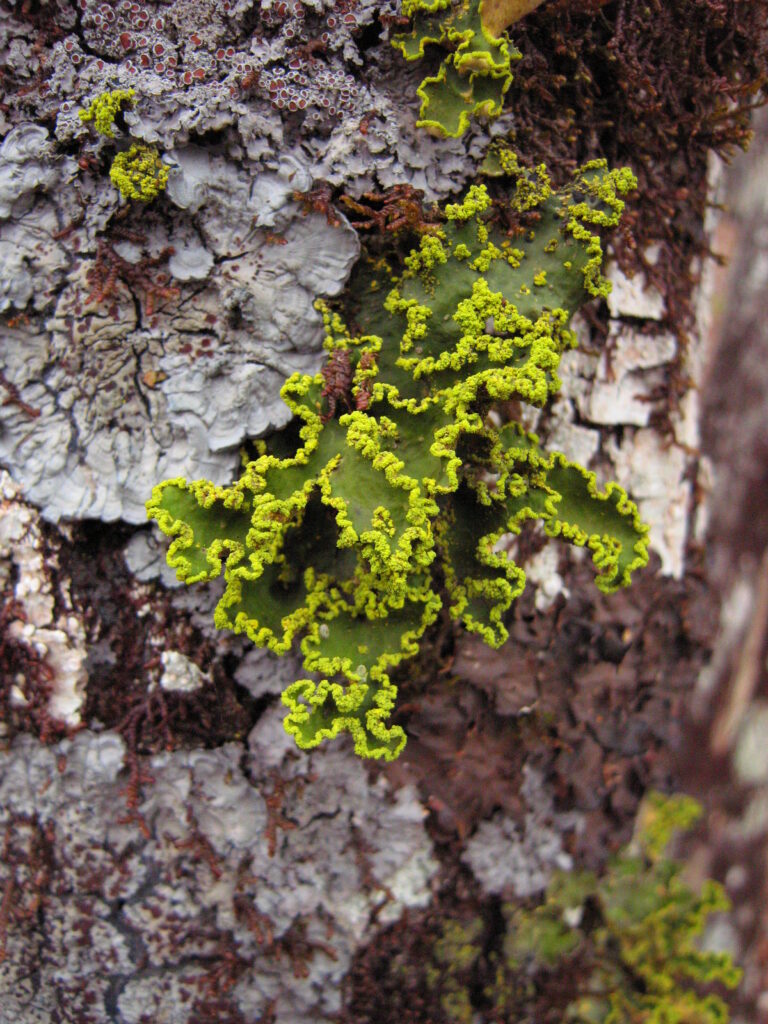
Siguiendo una variante de este tema, algunos líquenes producen pequeñas protuberancias en forma de dedo en su superficie. Son los isidios. Al igual que los soridios, los isidios también contienen hongos y fotosíntesis, y pueden crecer hasta formar un nuevo liquen sin tener que buscar una nueva pareja.
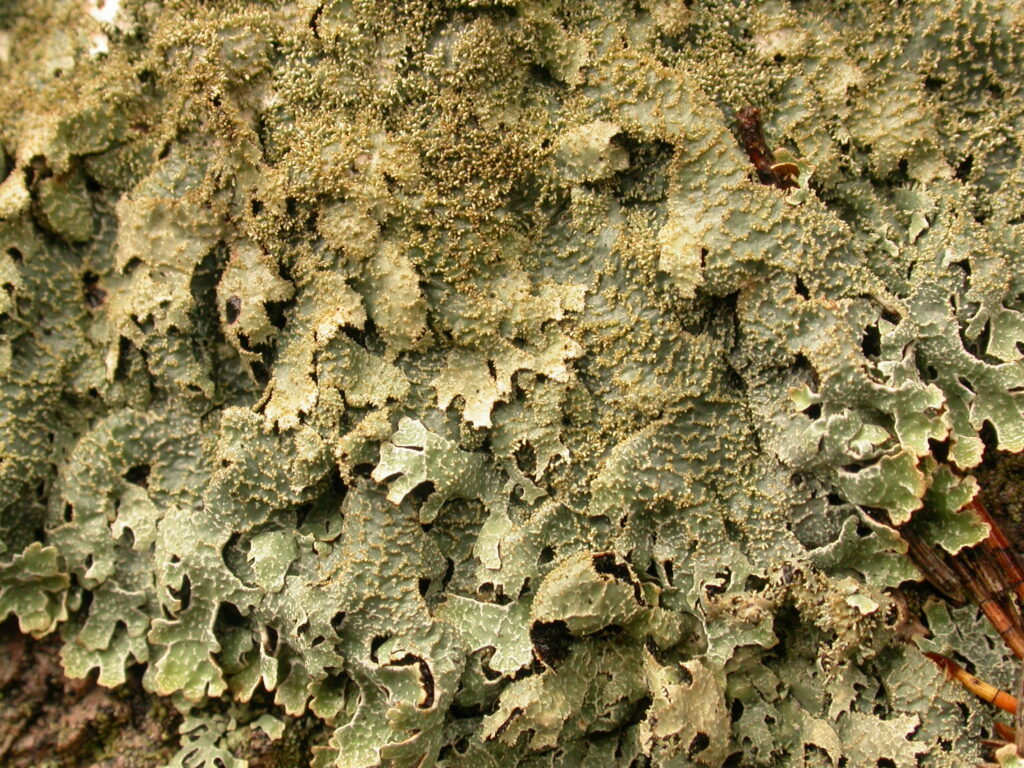
Por último, muchos líquenes pueden reproducirse por simple fragmentación, es decir, el cuerpo del liquen se rompe en dos o más trozos y cada trozo sigue creciendo. La fragmentación es la forma más común de reproducción de la barba de viejo(Dolichousnea longissima).
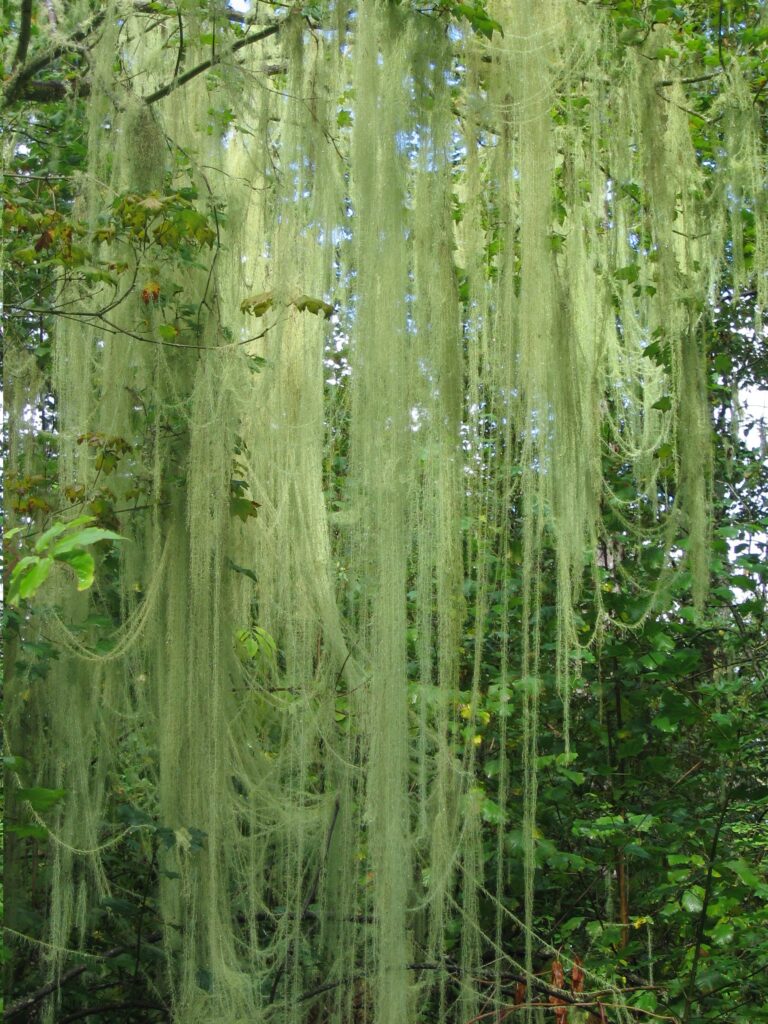
¿Para qué sirven los líquenes?
Los líquenes prestan muchos servicios importantes a los ecosistemas. Los líquenes contribuyen a la biodiversidad: hay al menos 18.000 especies de líquenes en el mundo y se encuentran en todos los biomas, incluidos ecosistemas que van desde algunos de los desiertos más áridos hasta la Antártida.

Algunos líquenes son pioneros, por lo que suelen ser los primeros en ocupar superficies recién expuestas. Los compuestos químicos liberados por los líquenes pioneros descomponen lentamente la roca volcánica recién formada en un proceso que inicia la formación del suelo y facilita el establecimiento de otras especies, como las plantas. Los líquenes también contribuyen al ciclo de nutrientes: en algunos bosques antiguos, los líquenes aportan hasta el 50% del nitrógeno. Muchos animales utilizan líquenes. Hasta el 90% de la alimentación invernal de los renos consiste en líquenes, y otros animales los utilizan como material para anidar, escondites y camuflaje.
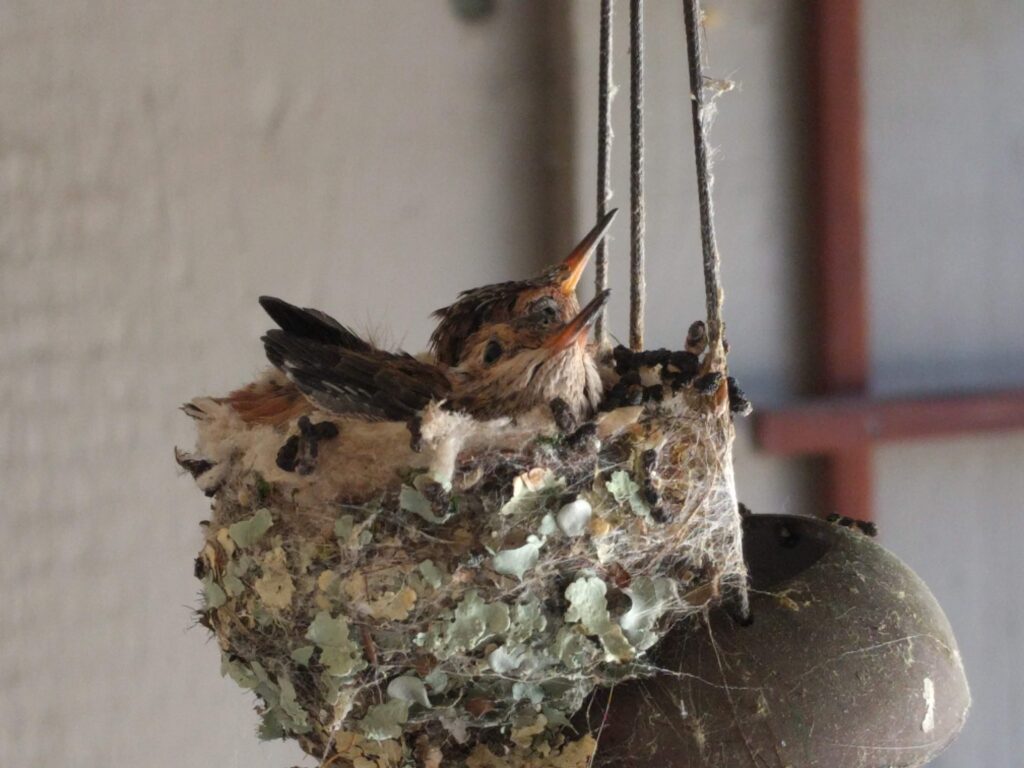
Los líquenes también pueden informarnos sobre el estado de nuestro medio ambiente. Muchos líquenes requieren condiciones ambientales muy específicas y no toleran grandes fluctuaciones respecto a su estado óptimo. Por ejemplo, la presencia de ciertos líquenes puede ser un indicador de continuidad ecológica que conduce a condiciones de bosque antiguo. Otros son sensibles a grandes fluctuaciones de temperatura y pueden ayudarnos a rastrear el cambio climático. Algunos líquenes son sensibles a la contaminación atmosférica y desaparecen cuando la calidad del aire es mala.
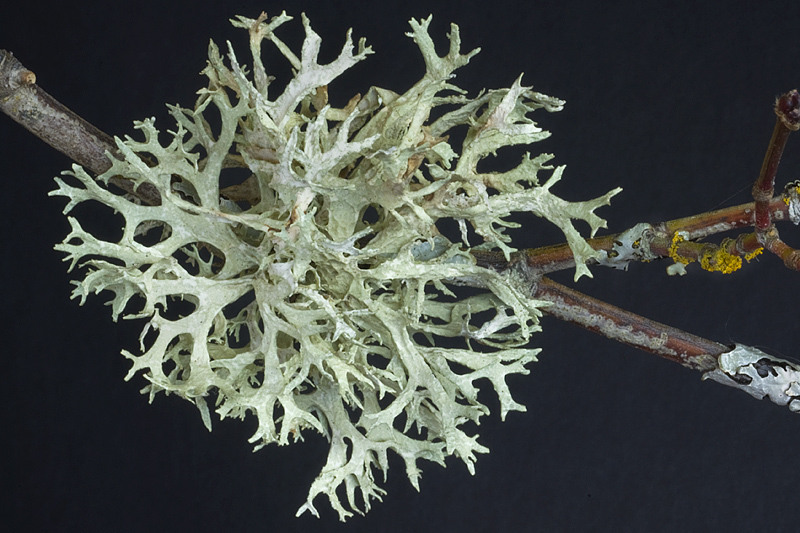
Busque líquenes en el Jardín
¿Quiere saber más sobre los líquenes? Fíjese bien en las formas de crecimiento, los sustratos y los cuerpos fructíferos de los líquenes de su entorno. Si se encuentra en el Jardín Botánico de Santa Bárbara, busque estos líquenes tan familiares. Recuerde observar los líquenes sin salirse del sendero ni pisotear las plantas.
Liquen verde de las rocas(Xanthoparmelia spp.)
Forma de crecimiento: foliosa
Sustrato: roca
Cuerpos fructíferos: apotecios o soredios marrones (los apotecios y soredios no siempre están presentes)
Dónde se encuentra en el Jardín - Blaksley Boulder
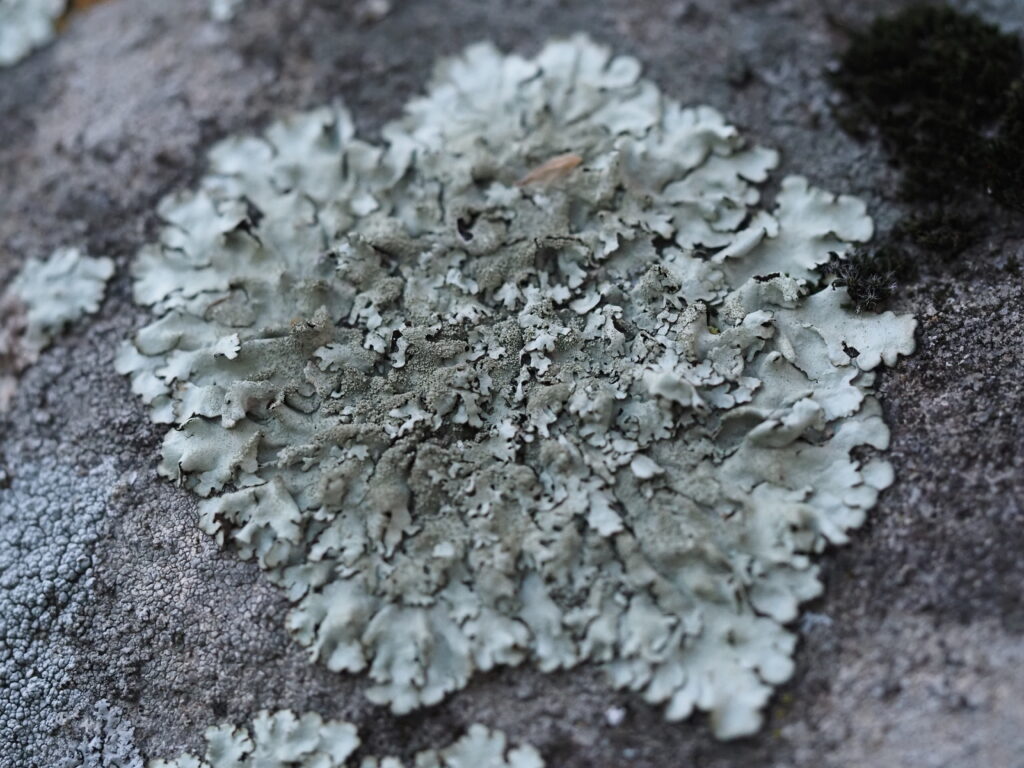
Liquen de los cabellos dorados y de los ojos dorados(Teloschistes spp.)
Forma de crecimiento: fruticosa
Sustrato: corteza
Cuerpos fructíferos: apotecios de color naranja brillante que en una especie tienen "pestañas" en los bordes (los apotecios no siempre están presentes).
Dónde se encuentra en el Jardín: en los árboles de la Sección Desértica
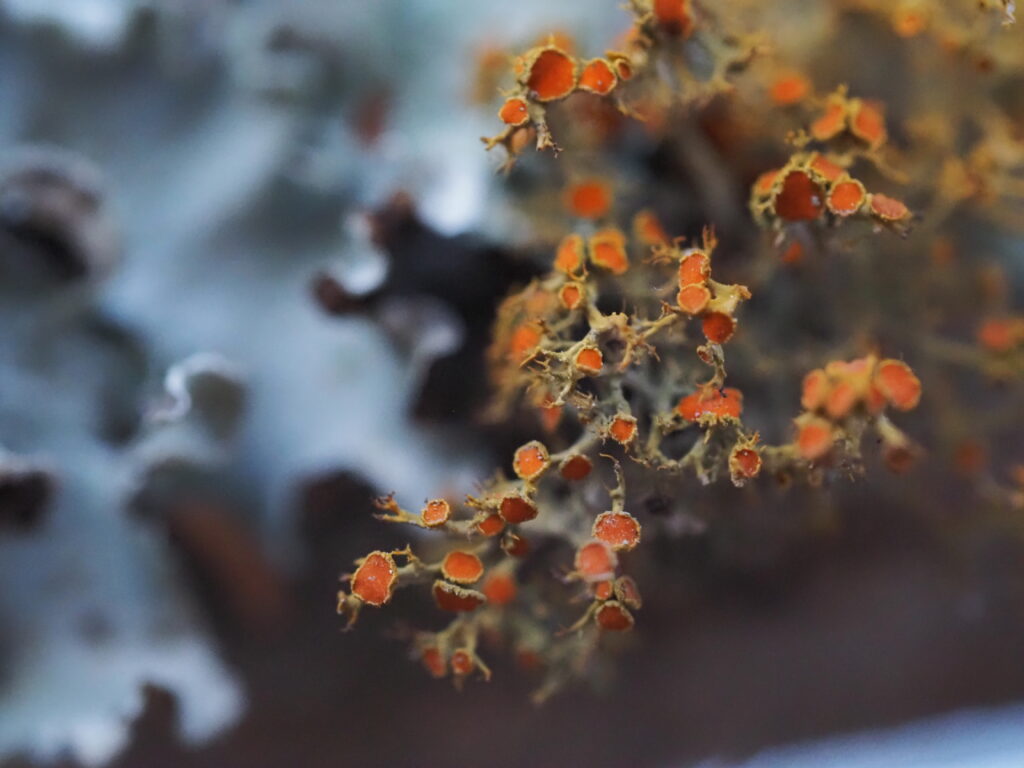
La identificación de líquenes suele basarse en descripciones de formas de crecimiento, sustratos y cuerpos fructíferos. Si ha encontrado un liquen que le interesa identificar, intente fijarse en estas características y compárelas con las descripciones de las especies en las guías. Tomar notas y fotos de cerca de los líquenes puede ser una ayuda útil para la identificación y para recordar lo que has visto cuando ya no estés en el campo. Se pueden encontrar fotos e información sobre las especies locales de líquenes en recursos como A Field Guide to California Lichens (Guía de campo de los líquenes de California) de Stephen Sharnoff y Lichens of Sedgwick Reserve and Santa Barbara County (Los líquenes de la reserva Sedgwick y el condado de Santa Bárbara) de Shirley Tucker. A Field Guide to California Lichens se puede encontrar en la tienda de regalos del Jardín y Lichens of Sedgwick Reserve and Santa Barbara County está disponible gratuitamente en línea.
 Donar
Donar